Since its inception, the Air Jordan brand has stood as a towering icon in the world of sportswear and fashion. Conceived by Nike for the legendary basketball player Michael Jordan, Air Jordans first made their debut in 1985 and quickly soared in popularity. Designed by Peter Moore, Tinker Hatfield, and Bruce Kilgore, these shoes were more than just athletic gear; they were a cultural phenomenon. Their release marked a pivotal moment in sneaker history, intertwining sports, fashion, and identity in a way that had never been done before.
The origin story of Air Jordan is as compelling as the man behind the brand. Before Michael Jordan’s rookie season with the Chicago Bulls, Nike, Adidas, and Converse vied for his endorsement. Nike’s pitch, however, was different. They envisioned not just a shoe line but an entire brand centered around Jordan’s dynamic persona. Despite Jordan’s initial reservations about the color scheme, Nike’s willingness to adapt their designs to suit his preferences sealed the deal. The resulting five-year contract, worth $2.5 million, was unprecedented at the time and set the stage for the Air Jordan’s phenomenal success.
Air Jordan’s impact extends far beyond the basketball court. The brand has become synonymous with innovation, style, and cultural relevance. From its defiance of NBA regulations, which only fueled its allure, to its strategic marketing campaigns like the “Banned” advertisement, Air Jordan shoes have continually pushed the boundaries. Over the decades, Air Jordans have been embraced by various subcultures, from hip-hop artists to sneakerheads, solidifying their status as timeless collectibles. The brand’s collaborations with artists, fashion houses, and even films have only heightened its prestige, making Air Jordans a staple not just in sportswear but in global fashion culture.
Iconic 1985 Air Jordan ‘Banned’ Commercial
How to tell if Air Jordan is vintage from the logo
Air Jordan, a subsidiary of Nike, is renowned for its iconic sneakers and sports apparel. The brand has used various logos over the years, each representing a distinct era in its evolution. Recognizing these logos can help you determine if your Air Jordan product is vintage. Below, we break down the key characteristics of the Air Jordan logo from different periods.
1988 to now Air Jordan logo
- The iconic Jumpman logo was introduced in 1988, featuring Michael Jordan in mid-air performing a dunk.
- The silhouette is highly stylized, capturing Jordan’s athleticism and grace.
- The Jumpman logo has remained largely unchanged since its inception, symbolizing the enduring legacy of the Air Jordan brand.
- While the logo itself has stayed consistent, it has been applied to various designs and product lines, each reflecting contemporary trends and technologies.

1988 to now Air Jordan logo
How to tell if Air Jordan is vintage from the tags
The evolution of Air Jordan tags over the decades reflects changes in design, branding, and manufacturing locations. Understanding these differences can help in identifying vintage Air Jordan clothing. Below is a detailed breakdown of Air Jordan tags from different eras.
Can’t identify those vintage tags or labels? Upload a picture on our vintage tag identification page, and we’ll help you out!
1980s vintage Air Jordan tags
- Often paired with the Nike logo, indicating the strong association with Nike.
- Tags feature the iconic Jumpman logo, sometimes alongside “Flight.”
- Made in U.S.A. inscriptions, highlighting the American manufacturing origins.
- Simple color schemes with red, black, and white being predominant.
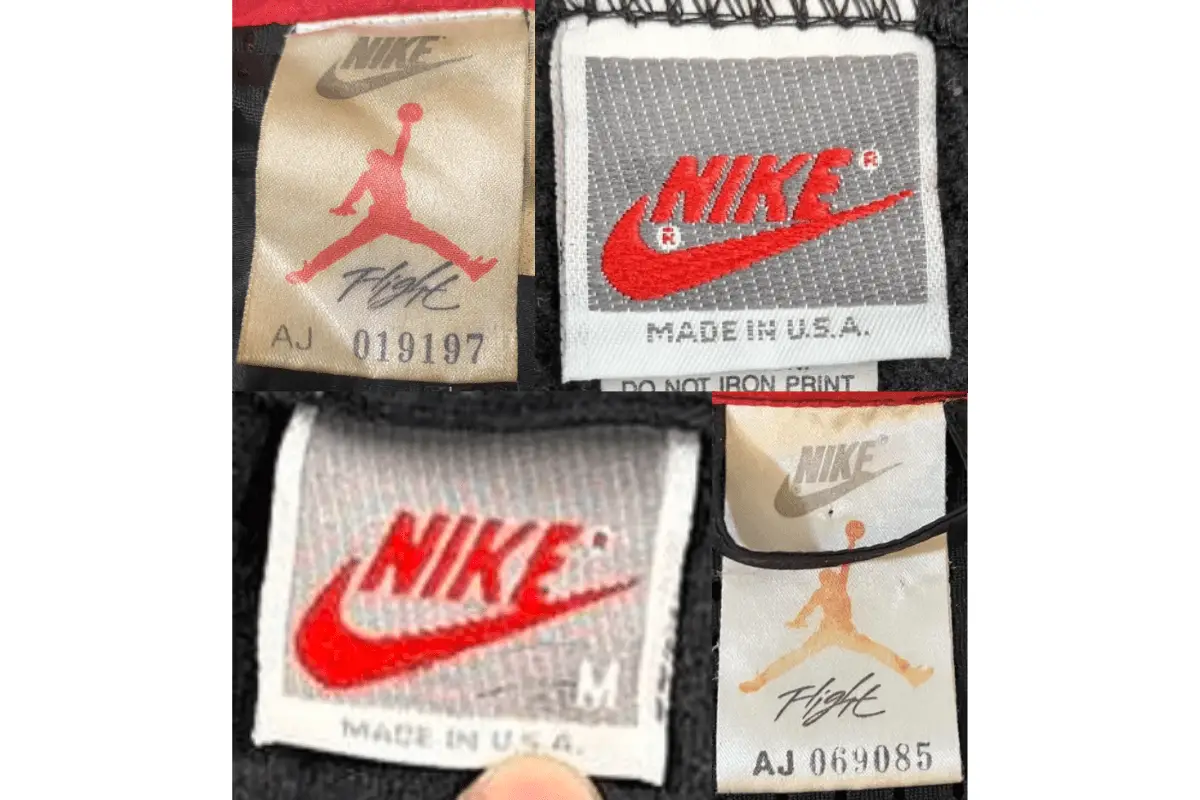
1980s Air Jordan tags
1990s vintage Air Jordan tags
- Introduction of larger tags with more detailed manufacturing information.
- Tags include size indicators and “Made in U.S.A.” or other country designations.
- Jumpman logo remains a prominent feature, often in white on black or red backgrounds.
- Tags might include additional details like fabric composition and care instructions.
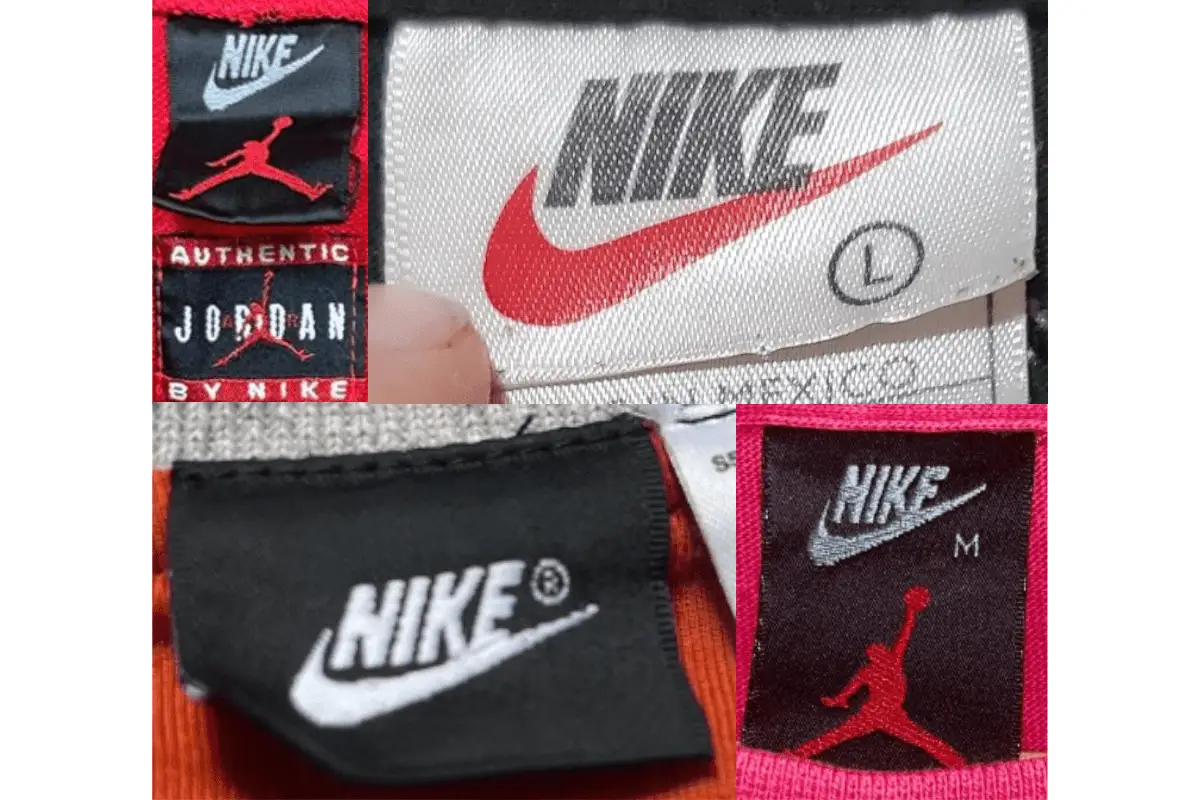
1990s Air Jordan tags
2000s vintage Air Jordan tags
- Tags begin to showcase more modern designs with bolder fonts and darker colors.
- Introduction of tags that indicate different production countries like India and China.
- Consistent use of the Jumpman logo, sometimes paired with the Nike swoosh.
- Tags often include detailed size information in multiple languages.
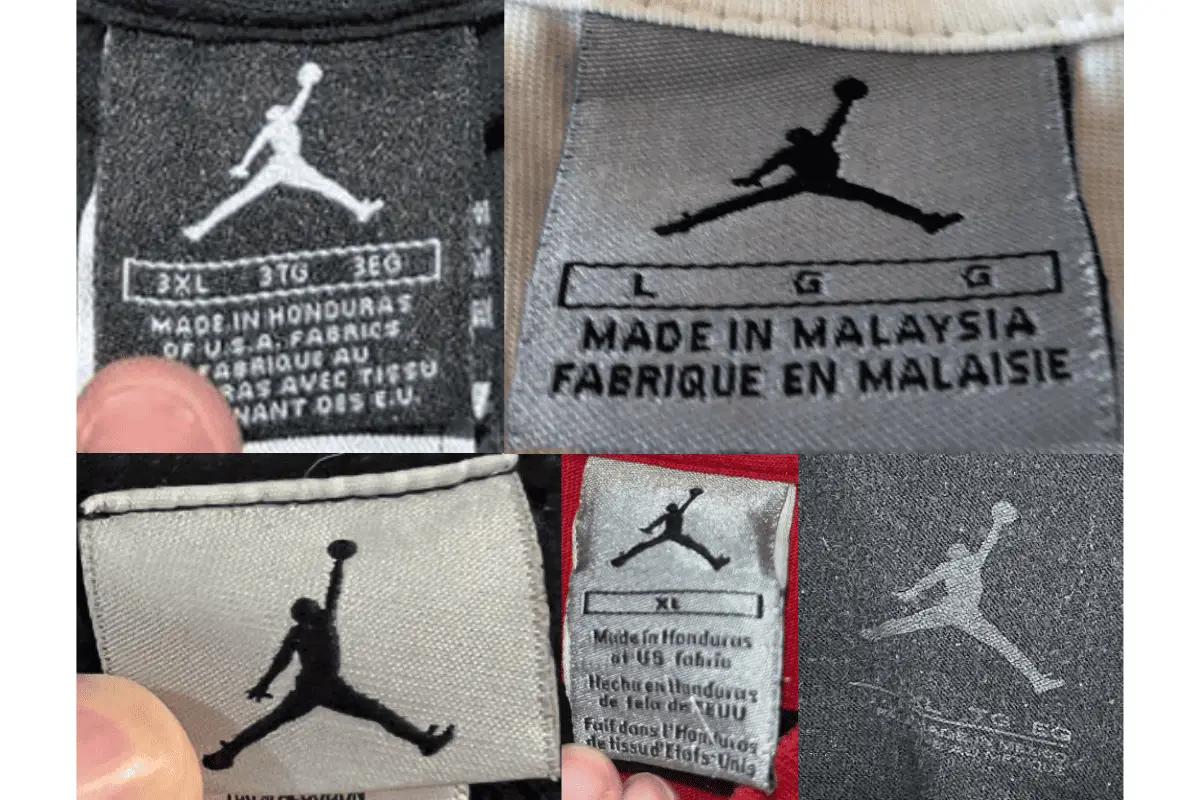
2000s Air Jordan tags
2010s vintage Air Jordan tags
- Tags reflect a more streamlined and minimalist design approach.
- Manufacturing locations diversify, with tags showing countries like Honduras and Malaysia.
- Jumpman logo remains central, often in contrasting colors for visibility.
- Tags may include production years and additional care instructions in multiple languages.
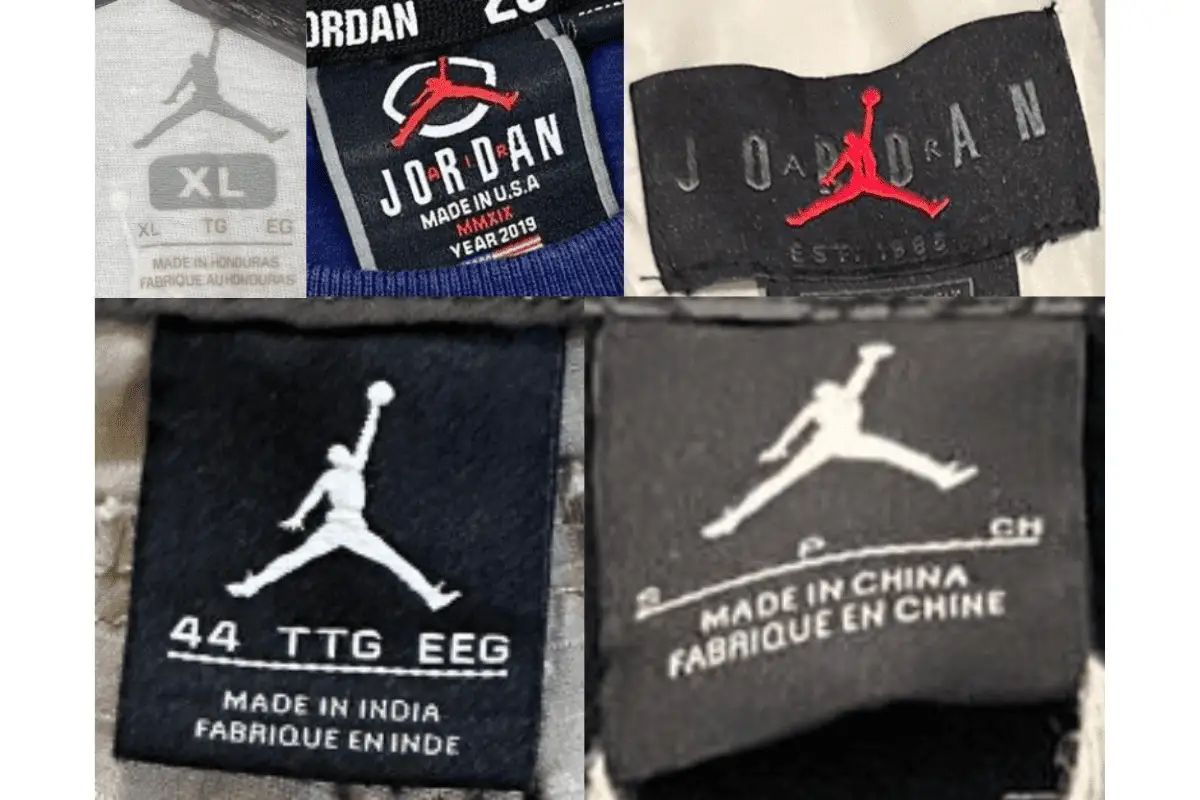
2010s Air Jordan tags
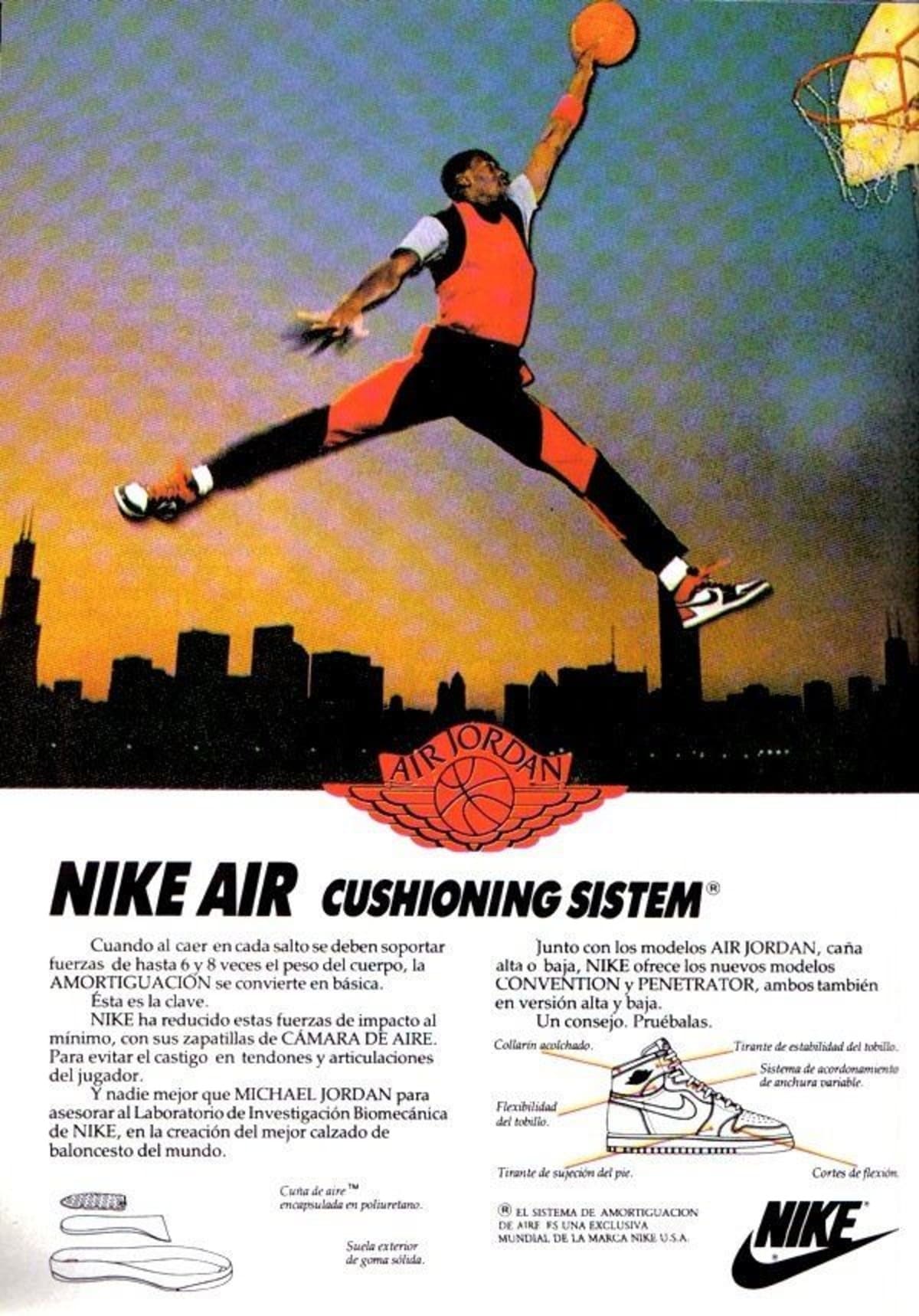




Wow, this paragraph is good, my sister is analyzing
these kinds of things, so I am going to convey her.